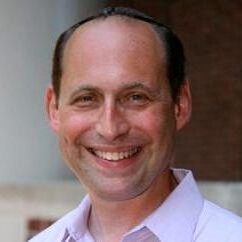An Outsider’s Perspective

Once in a while, an outsider’s view yields a crystal clear vision of essential qualities not quite visible to those on the inside. And once in a while, an attribute’s inside, its lore or narrative, matches up perfectly with its outside, its nomos, or law.
To illustrate and give life to these assertions, I share with you a very short Talmudic conversation (Bavli Baba Batra 60a) that begins with a statement from the Mishnah: “Within a communal courtyard, a person may not open a door directly facing another door, nor a window directly facing another window.” That’s the law. Homes built around a shared courtyard, as many in the ancient world were, had to be constructed so that the privacy of each resident was guarded. As Rashbam (R. Shmuel b. Meir, twelfth-century France) puts it in his comment on this clause: “The reason is on account of modesty.”
The Gemara, in a succinct, but I believe far-reaching, two-and-a-half lines, dramatically broadens the horizons of the Mishnah’s legal norm. The Gemara begins with a question, “How do we know this?” or literally, “From where are these words?” What Biblical verse or verses justify the Mishnah’s statement of law? Very frequently, the Gemara holds the Mishnah accountable with this precise question. “Prove your claim,” the Gemara’s sages seem to say to their elders, the rabbis whose views shaped the Mishnah. “Reveal your sources.”
Rabbi Yohanan, a third-century rabbinic giant from the land of Israel, answers the question with a verse (or more properly part of a verse) from this week’s parashah. “And Balaam lifted up his eyes and saw the people of Israel encamped by tribes (Num. 24:2).” Balaam, an ancient Near Eastern seer for hire, is engaged by the namesake of this week’s parashah, Balak the king of Moab, to pronounce curses on the Israelites, whose military might he fears. No matter how hard he tries, Balaam can only offer blessings on Israel’s behalf, words that flow out of him in the form of beautiful and flowery poetry. The verse cited by Rabbi Yohanan introduces the best known of Balaam’s poems of blessing, an oracle inspired by his gazing out on the Israelite encampment.
Verse in hand, Rabbi Yohanan now offers a gorgeous piece of midrash, a narrative that both expands the Torah’s tale and provides a lovely counterpoint to the Mishnah’s statement of law. “What did he (Balaam) see? He saw that the openings of their (the Israelites’) tents were not directly oriented toward one another. He then said: ‘These are worthy of having God’s presence (Shekhinah) rest upon them.’” That’s the lore that corresponds to the Mishnah’s law, or in classical Hebrew terms, the Aggadah that matches the Mishnah’s halakhah.
For me, this tiny sugya (a self-contained Talmudic discussion) opens up two reflections that I want to share this Shabbat. The first deals with the relationship between halakhah and Aggadah, the two broad categories of writing and speaking that make up Rabbinic Judaism. In our frequent debates on issues large and small, we tend to emphasize one genre to the near and sometimes total exclusion of the other. Rabbi Yohanan’s take on the Mishnah and on this week’s parashah stakes a claim for full integration of narrative and nomos. In this one instance, at least, they form two inseparable component parts of a larger whole. That degree of integration is the ideal for we which we should strive in all instances.
Balaam’s outsider status enables him to see something essential about Israelite life that, I suspect, the Israelites themselves overlook. Balaam takes note of one of the central and defining elements of living within a community. That thought is the second reflection that I offer to you. A community is a space, actual or imagined, in which people live together. Balaam’s observation, as teased out by Rabbi Yohanan and as canonized in the Mishnah, highlights and resolves the inherent tension of protecting one’s individuality and asserting one’s autonomy while continuing to live in community. Balaam sees with absolute clarity how our ancestors, apparently effortlessly, negotiated that challenge. The Mishnah normalizes Balaam’s vision and Rabbi Yohanan completes the circle by filling in the Aggadah that grounds the halakhah. Rashbam’s comment on the Gemara, itself very succinct, puts all the metaphors together: “The encampment of Israel is analogous to a shared courtyard.”
The contemporary encampment of Israel, the Jewish community in which we all reside, is also analogous to a shared courtyard. Our task, perhaps the eternal task of the people of Israel, is to create a coherent sacred community in which no one’s tent opens directly toward another’s. In our time of sovereign selfhood, that’s a very difficult task, for to live in community does ultimately mean to relinquish a bit of one’s autonomy. Our tradition insists on the worthiness of that deal, and we know it from our own experience. Living in community enriches our lives in myriad ways. It just takes work to pull it off. It also enables us to feel God’s presence in our midst. Or, in Balaam’s original and most famous words, it enables us to lay claim to this most poetic of his many blessings: “Ma tovu ohalekha Yaakov, mish’k’notekha Yisrael!” (How pleasing are your tents, O Jacob, Your dwellings, O Israel!) (Num. 24:5).
The publication and distribution of the JTS Commentary are made possible by a generous grant from Rita Dee and Harold (z”l) Hassenfeld.



